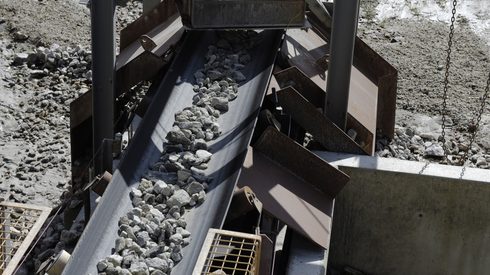US Steel, Steel Dynamics Inc and Nucor all pointed to slipping steel prices in their guidance releases for the second quarter.
US hot-rolled coil prices have experienced a rough-and-tumble slide since the end of March.
On April 1, Fastmarkets’ daily steel hot-rolled coil index, fob mill US Midwest was calculated at $42.75 per hundredweight ($855 per short ton). As of Friday June 14, the most recent calculation, it had fallen 19.27% to $34.51 per cwt.
Fastmarkets’ weekly steel hot-rolled coil index, fob mill US South fared little better, falling 15.34% from $42.19 per cwt ($843.80 per ton) on April 3 to $35.72 per cwt on June 12.
“Average selling prices are expected to be sequentially lower, reflecting the segment’s market-based monthly contract and spot price exposure,” US Steel said in its guidance release on Monday June 17. “Pricing headwinds are expected to be partially offset by higher shipment volumes and lower metallics costs.”
US Steel further noted that “diversified end-market exposure and the favorable impact from successful annual fixed contract negotiations in the first quarter are expected to help keep average selling prices and shipments consistent, despite shifting market dynamics throughout the quarter.”
The company’s second-quarter adjusted net earnings are expected to be $0.76-0.80 per diluted share. US Steel’s first-quarter adjusted net earnings were $0.82 per diluted share, or $206 million.
Steel Dynamics said in its guidance, also released on Monday, that second-quarter profitability was “expected to be meaningfully lower than sequential first-quarter results, based on lower realized pricing offsetting steady shipments.”
Steel Dynamics attributes the spotty spot buying environment to declining scrap prices.
“Underlying domestic steel demand remains intact, although steel buying hesitancy has resulted for a weakening scrap environment,” the company said.
It forecasts second-quarter earnings of $2.64-2.68 per diluted share. In the first quarter, the company earned $3.67 per diluted share, or $584 million.
Nucor likewise pointed to lower average selling prices and, “to a lesser extent,” lower volumes in its steel mills segment. Its steel products segment, by contrast, has been able to partially offset falling prices with increased volumes.
Nucor said it expects second-quarter earnings to be $2.20-2.30 per diluted share. In the first quarter, the company earned $3.46 per diluted share, or $844.8 million.
Cleveland-Cliffs has not yet released detailed guidance for the second quarter. In its first-quarter earnings release on April 22, chief executive officer Lourenco Goncalves said he expected to “benefit in Q2 from the lower costs under our [full-year] guidance, which we have maintained.”
That full-year guidance includes unit-cost reductions of $30 per short ton, or $500 million in adjusted earnings before interest, taxes, depreciation and amortization (EBITDA) benefit compared with 2023.
“Our largest end market, the automotive sector, is expected to remain strong. Orders from our service center customers have started to increase, with spot pricing also on the upswing,” Goncalves said in the first-quarter earnings release.
We provide more than 250 steel prices, including industry benchmarks from across the globe. Fastmarkets’ steel price data combines the intelligence of industry-leading brands such as Metal Bulletin, American Metal Market, Scrap Price Bulletin and Industrial Minerals. Talk to us about our steel price data options today.




